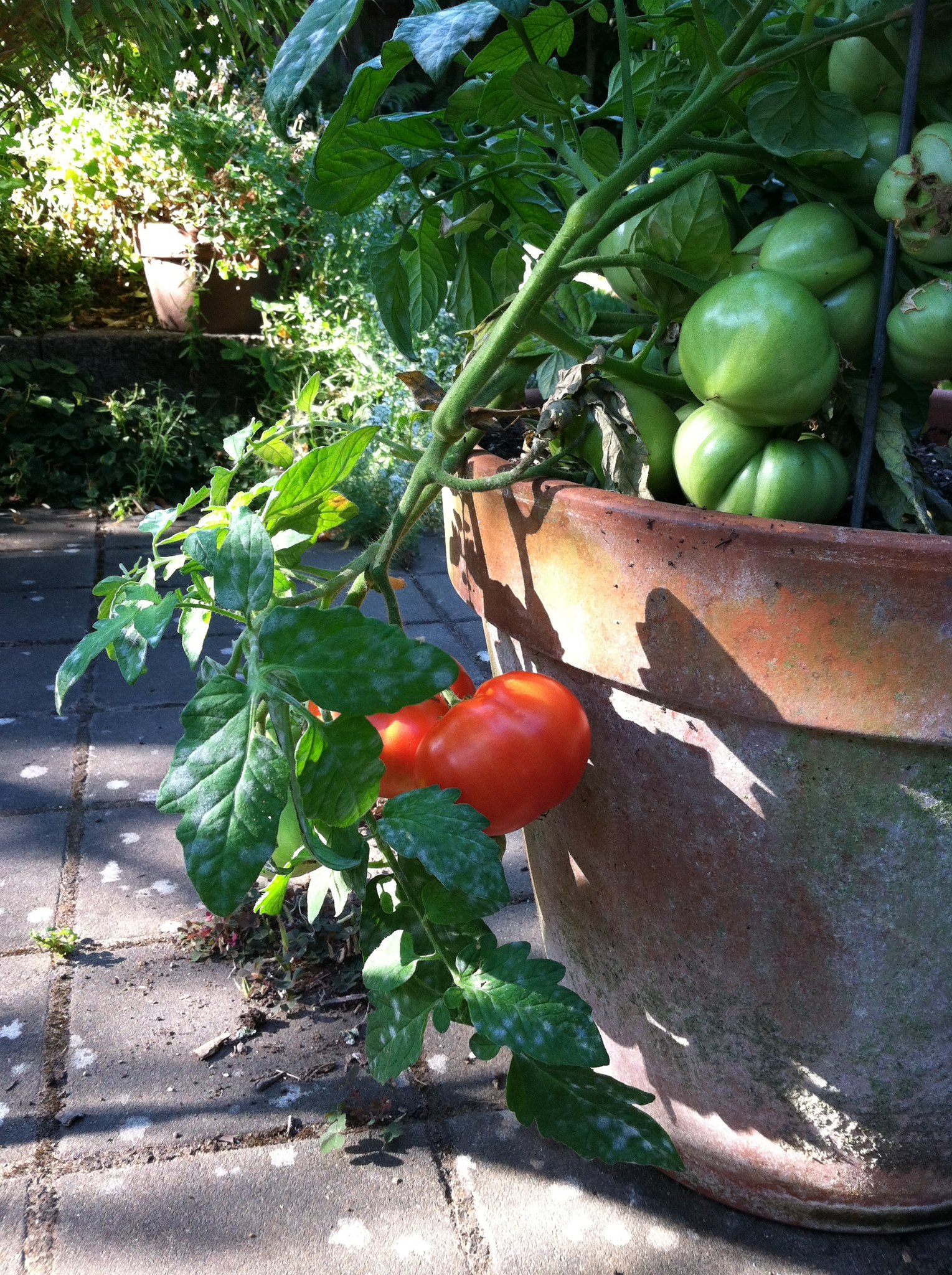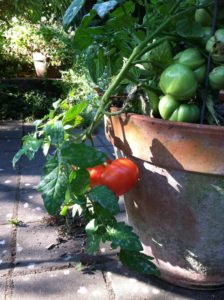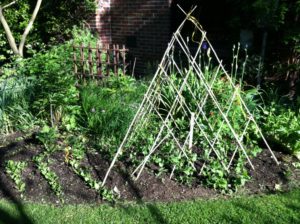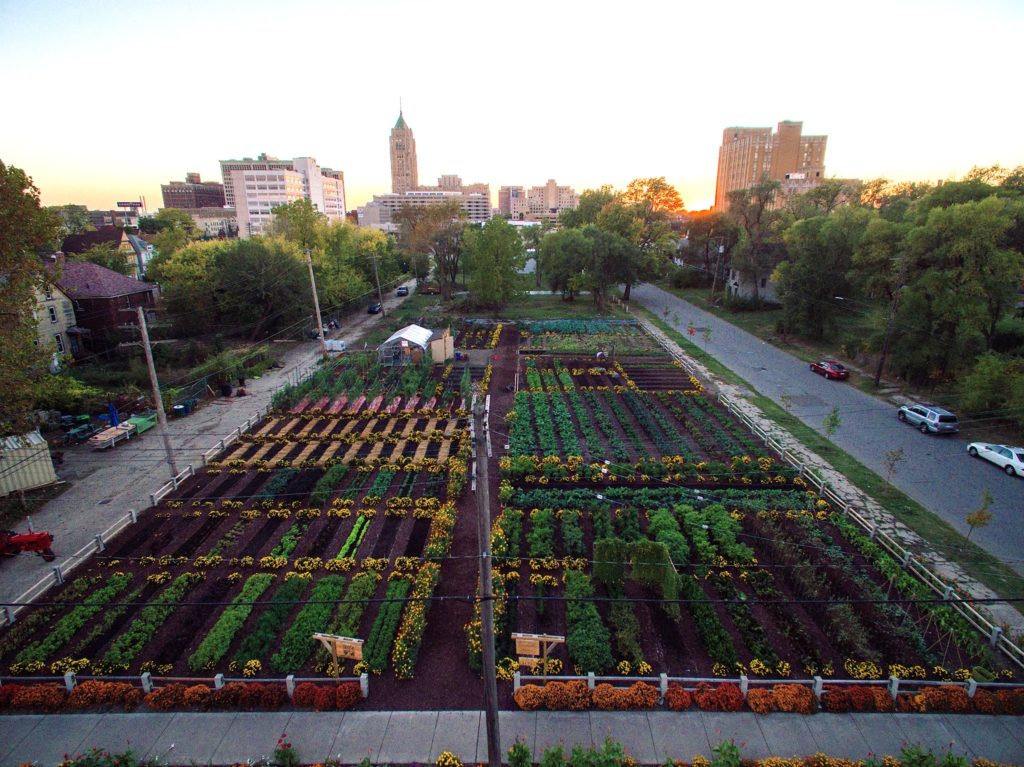We all take our food for granted, it’s just there. It’s pretty good quality, the produce seems fresh, the meat is reasonably priced, plenty of milk on the grocers’ shelves, and we can usually afford to feed ourselves and our families well. The truth? It’s all an illusion. The distribution network is built on fragile connections that could be disrupted in any number of ways.
A question for my fellow Montanans: Just imagine – what if we could no longer import our food? Or bring it in from the “produce corridor” that extends from Mexico to British Columbia up and down Interstate 5? Or even get it from neighboring states or provinces? What would we have to eat?
While I ask this of my friends and neighbors, the same question applies to you, whether you live in Maine, Alabama, Minnesota, or Washington. What would you have to eat?
High winds, dangerous waves, higher sea levels, hurricanes, and tsunamis could prevent sea freight. Floods, fires, snow, the deep-chilling Polar Vortex – all kinds of “climate weirdness” – could close our highways. We could experience earthquakes anywhere across the country; in 2018, California experienced 303 3-level (and over) quakes. Over the same period, Montana had more than 400 quakes, though most were 2.0 to 2.5-level. Political unrest or economic policies could close the petroleum/crude oil spigot or eliminate our import providers and export customers.
What we thought was science fiction, is turning out to be fact! We could be cut off from our external food sources.
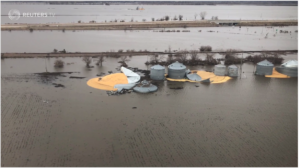
Right now, the state of Nebraska is under water and it may take months for things to dry out enough for farmers to get in the fields and the transportation departments to repair roadways. And all that beef and pork, poultry and eggs, corn, oil seeds, wheat and other grain, and dairy products that Nebraska farmers produce will be delayed as well.
This week, it’s possible the southern US border will be closed to movement of goods – that means those avocados you crave will not make it north. In fact, according to the U.S. Department of Agriculture, Mexico is the biggest exporter of fresh produce to the U.S. by far, responsible for nearly 70 percent of our vegetable imports and almost 40 percent of fruit imports. So our grocery store produce bins could be empty until US crops come to market.
It’s coming down to this question: Could we – if we had to – feed ourselves? Montana is primarily an agricultural state after all, where almost 28,000 farms and ranches are spread across 60 million acres. Shouldn’t we be able to support our meager population of just over 1,000,000 souls?
What if?
We live in a world where our food systems are so interconnected that we forget where our real food grows. In my own freezer there are strawberries from Turkey, wild blueberries from Canada, and peaches from Chile. (Guilty as charged…)
The beef and pork in our supermarkets is from Australia, New Zealand, Brazil, and other countries unknown since COOL (Country of Origin Labeling) was repealed in 2016. Fish from Vietnam, shrimp from Indonesia… their labels still show their source. Our food is certainly more well-traveled than most people I know.
Our produce – all those fruits and vegetables on the grocery shelves – primarily comes from California, Texas, Florida, Mexico, and Central and South America. What is euphemistically called “fresh produce” has probably traveled at least 1500 to 2500 miles to get to our tables. And such a long trip makes for “aged” fruit and limp vegetables that have lost a considerable amount of their color, aroma, flavor, and nutritive value.
On the other hand, we export a vast majority of the food we produce. Montana is a leader in the export of wheat, barley, and lentils. We are sixth in the US for the total number of beef cattle we raise (about 3 head of cattle for every Montana resident) – and while most of our meat production doesn’t go out of the country, it certainly goes out of state.
The simple answer is, “Yes, we could feed ourselves,” but it would take some changes.
What do we have?
Montana’s top ten agricultural products are a reflection of our soils, climate, and weather patterns: beef, wheat, hay, barley, lentils, dry peas, sugar beets, chickpeas, potatoes, and oil seeds.
Cause or effect? If you eat only Montana’s current top food products, you’re not going to have a particularly well-balanced diet. Your dinner would consist of mostly meat and potatoes, a lot of bread, with a little vegetable oil and sugar on the side. And accompanied by a beer.
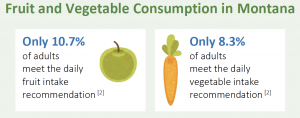
Maybe we have a “chicken/egg” problem here. It appears that most Montanans already eat very little of the recommended daily amounts of fruit and vegetables needed for a healthy diet. We’re eating only about 11 percent of the recommended amount of fruit and about 8 percent of the recommended amount of vegetables. So do we not eat them because we don’t grow them, or do we not grow them because we don’t eat them?
That can and should change.
What could we have?
Don’t let anyone tell you that you couldn’t eat a balanced diet in Montana, right now we just have to get it from somewhere else. The key to being self-sufficient is this: we can’t have everything all the time and exactly when we want it. We can learn to enjoy what we have.
Admitted, I’m really fond of strawberries in January – but the ones in my freezer are world travelers! I’d rather be eating berries grown in Montana, harvested in season, then frozen or made into jam in my own kitchen.
For about 6 months out of every year, thanks to high tunnels and green houses, Montana could deliver a fully balanced diet to its residents. The good news is that we do have some very special “pockets of produce:” the Flathead Valley, the Bitterroot Valley, the Gallatin Valley – small, but mighty.
Or we could find ways to grow our own – either independently or as part of a community system that includes home gardens (think Victory Gardens), community gardens, local CSAs, or urban farms tucked close to – or even in – our towns and cities.
Where to start?
You have options! Here are at least five ways you can become part of your local food system and strengthen your own – and your neighbors’ – food security.
- Grow your own at home. If you live in an apartment or condo, grow something on your porch or patio. Tomatoes in patio pots, herbs in window boxes – there are lots of ways you can take a first step. It only takes a few square feet to start a small garden; so, if you have yard space, tear up some turf! Salad greens are especially easy to grow, and if you have partial sun, you can continually start new plants throughout the growing season. Toward fall, plant some “sturdy greens” like kale, chard, and collards, they’ll hold their own during early mild frosts. If you live in Montana, a deer fence is a requirement – but they don’t have to be expensive. Check out the options, and while you’re at it, tie some metallic-colored ribbon from the top to keep the deer distracted.
- Grow your own in a community garden plot.
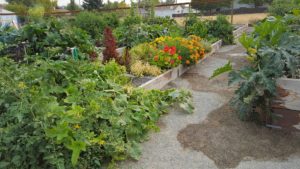
Source: Helena Community Gardens Nearly every community of any size offers plots that include water, shared tools, and are generally fenced against intruders – two-legged and four-legged.
A community garden plot comes with built-in advisors: you can ask your burning questions of anyone with a neighboring plot. If they’ve been gardening more than a couple of years, they’ve “been there, done that!” And, you can share seeds, starts, and the bounty of your harvests with your neighbors.
- Shop at one or more farmers market.
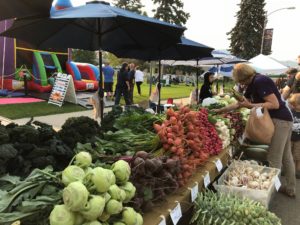
Helen Farmer’s Market And almost every city, town, or village in Montana has a farmers market; some have more than one. And there are winter markets in Bozeman and Missoula. At a farmers market you get produce that is fresher than anything you’ll find on a grocery shelf, where it takes days – or even weeks – to arrive.
You can thank a farmer in person, with a purchase and a handshake. And you can encourage more local and regional production by encouraging others to visit the market.
A strong local food system takes two: a farmer and a consumer – there’s no point in a market if there are no growers, even if there are lots of buyers; and no point if there are lots of growers and no buyers.
- Join a CSA.
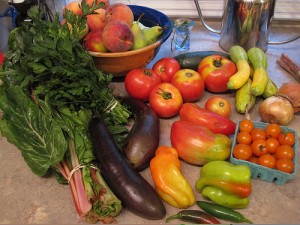
What’s in your CSA box? The definition of a CSA? “Community-supported agriculture (CSA model) is a system that connects the producer and consumers within the food system more closely by allowing the consumer to subscribe to the harvest of a certain farm or group of farms. In return for subscribing to a harvest, subscribers receive either a weekly or bi-weekly box of produce or other farm goods.” (Wikipedia)
With a CSA subscription you are helping a farmer plan for the growing season and you’re helping prepay for seed, labor, and materials that are needed for the upcoming season.
The best part about a CSA subscription, is that you get produce from “your farm,” where you can see it being grown and harvested. Being a member of a CSA is being a part of a great community that supports a very hardworking farmer and his family.
- Support community agriculture activities.There are unlimited opportunities: share your garden space, seeds, production with your neighbors. Fund and build a community greenhouse for start-up farmers to launch their market gardens. Or go big and join together to build a 3-acre garden that can support 200 families! The Michigan Urban Farming Project in Detroit, has produced over 50,000 pounds of produce since 2011 on just 3 acres! It can be done, folks!
We need a variety of nutritious local food. We need local farmers, ranchers, and good food producers. And we need to work together to make it happen. By strengthening our local distribution connections, we can ensure our own food security. Then if (or when) the current system begins to fray, we will be able to feed ourselves.
Let’s put our minds – and our shoulders – to work and adapt to our changing climate while we still can.

